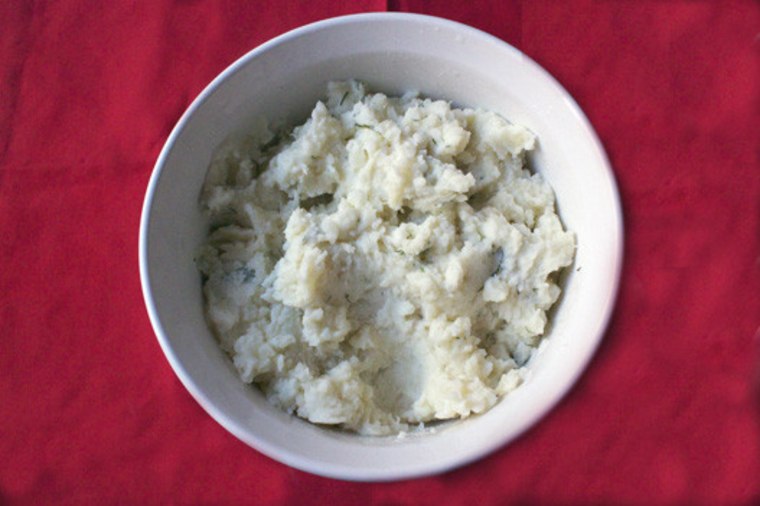There are many things I love about shopping at the greenmarket in New York City’s Union Square Park. Supporting local farmers, the opportunity to buy freshly harvested vegetables from the people who actually grow them and, of course, the free samples. In the winter, the pickings at the market are definitely slimmer than in the more bountiful summer and fall seasons, but there’s always something interesting among the bins and barrels. When I was there recently, I discovered the Gilfeather rutabaga, the tastiest and sweetest member of the rutabaga family.
Truth be told, I’d never had a rutabaga before. I wasn’t even entirely sure what kind of vegetable it was. I thought it might be a root vegetable and maybe even part of the turnip family, but I couldn’t say. But there they were in abundance at a stand operated by Windfall Farms of Montgomery, NY. The girl behind the register told me to get the smaller variety, as they have a sweeter taste, and that they’d be tasty mixed in with potatoes. Anything that goes well with potatoes is good enough for me. Sold!
It turns out that the Gilfeather Rutabaga is an heirloom root that dates all the way back to early 20th century Vermont, when a farmer named John Gilfeather began growing them in the town of Wardsboro. He called them turnips, but the rutabaga is actually a cross between a cabbage and a turnip, and is larger and denser than your typical turnip.
After reading up on the root, I decided to use my rutabagas to make a potato rutabaga mash. I love mashed root vegetables, especially on a cold winter’s night. I did learn that you can eat rutabagas raw, so after I peeled mine I cut a thin slice to sample. It tasted kind of like a radish, only with a sweeter, starchier flavor. I quartered the rutabagas and into the pot they went with two russet potatoes.
Oh yum! The rutabaga gave my mashed potatoes a distinctive flavor that was tasty in a way that wasn’t overpowering. Since the consistency of the cooked rutabaga was similar to that of the potatoes, the two blended beautifully into a salty, creamy carbohydrate side. I added garlic and a little bit of dill because I had both on hand, but sticking with just butter, milk and salt would do the job as well. Serve the mash with chicken, pork or even steak for a twist on the standard meat and potatoes meal.

Potato and Gilfeather rutabaga mash with garlic and dill
Serves 3-4
2 Gilfeather Rutabagas, peeled and quartered
2 medium russet potatoes, peeled and quartered
½ cup half and half
2 tablespoons butter
2 garlic cloves, chopped
1/2 tablespoon of fresh dill, chopped
Salt and pepper to taste
In a large pot of cold, salted water, bring the rutabagas and potatoes to boil. Simmer until both are tender, about 20-25 minutes. Drain the vegetables and, while still hot, gently mash. Add half and half and butter and whip until desired consistency, adjusting ingredients to taste. Add garlic and dill, season with salt and serve warm.
Get more tips and recipes for seasonal eats at Made By Michelle.
